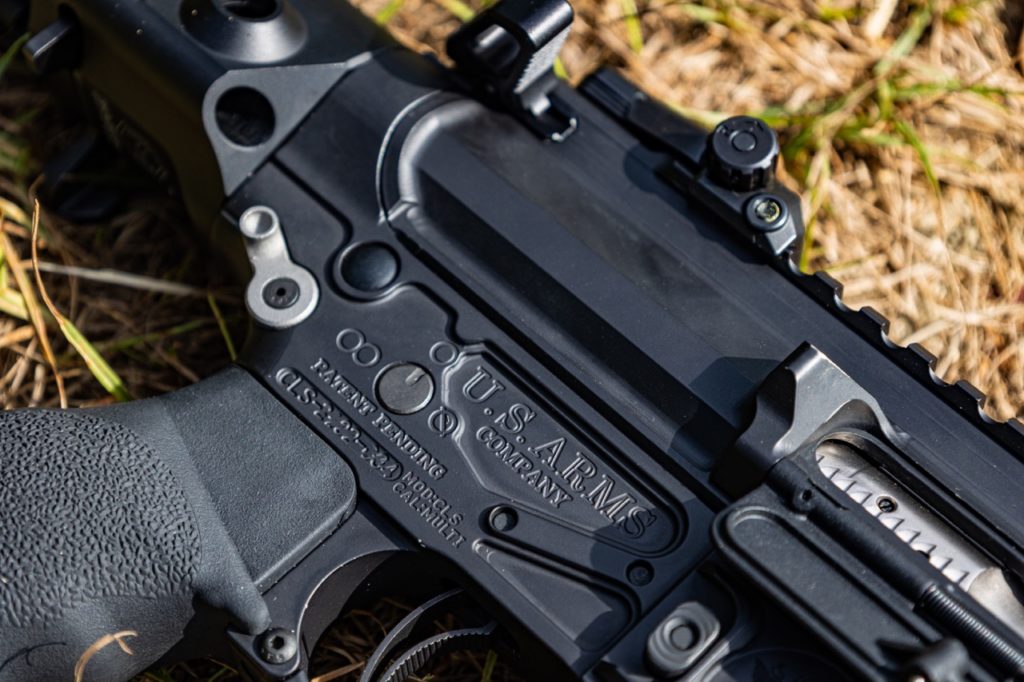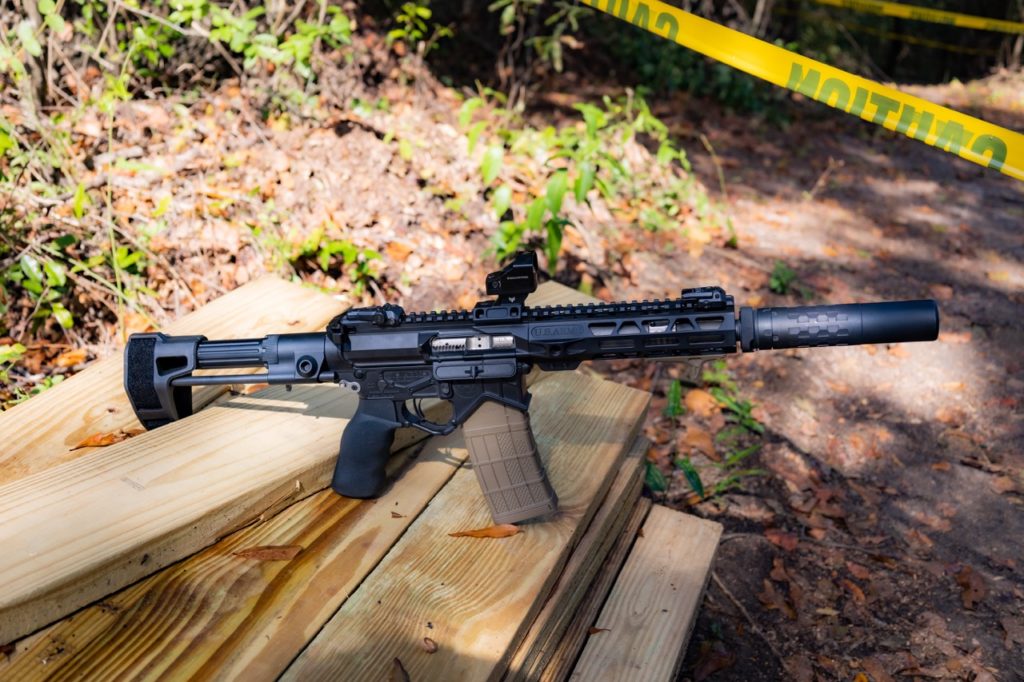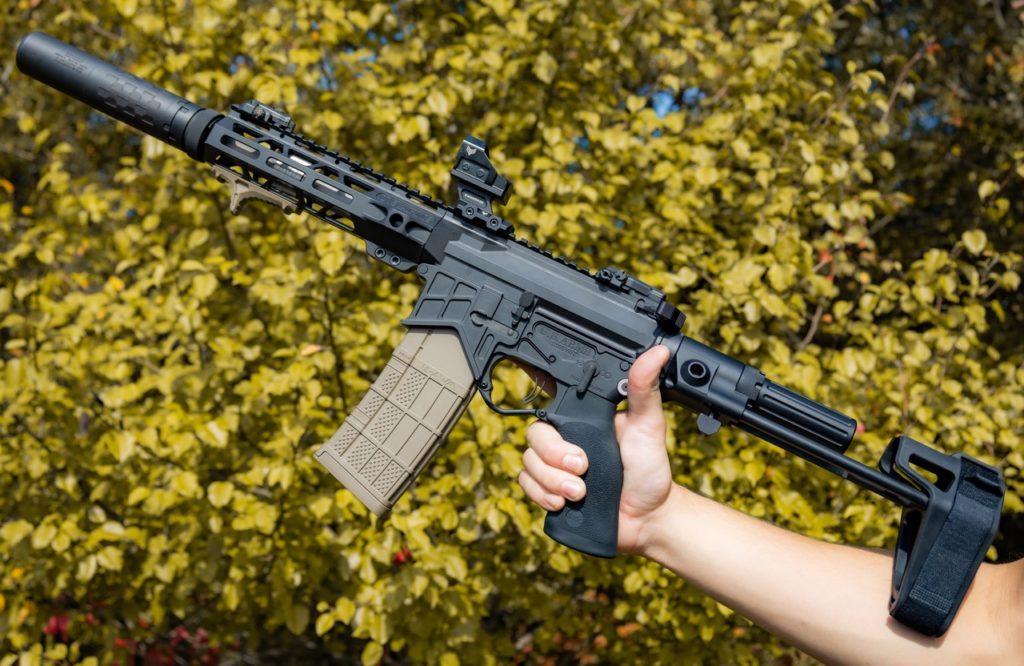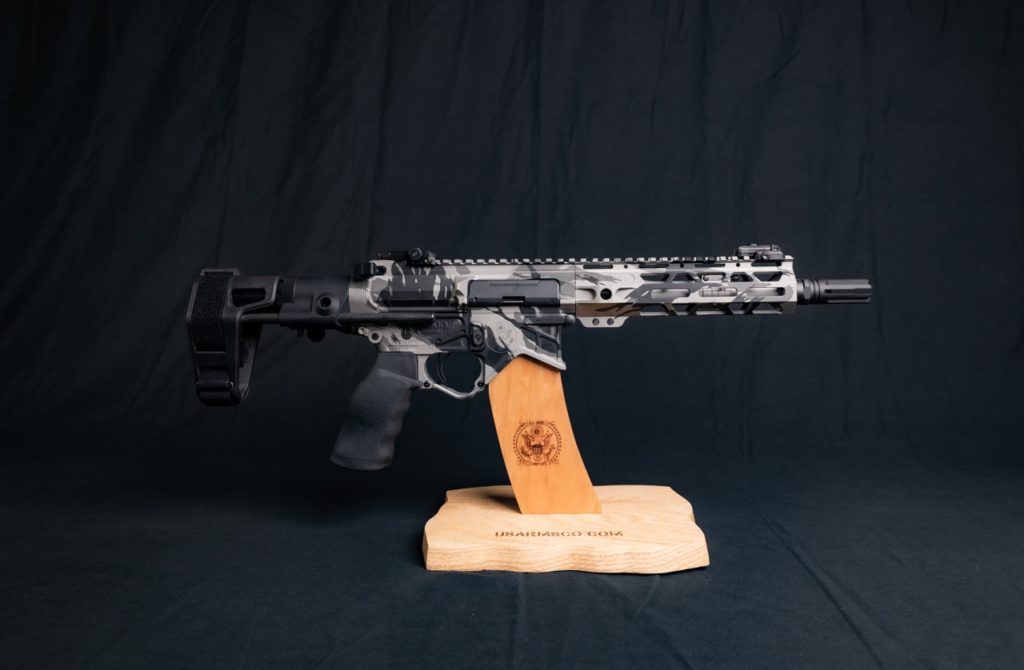
The .300 Blackout has been around for almost three decades. In 1992 SSK introduced the 300 Whisper which was eventually adopted into the 300 Blackout. Still, it is a newcomer compared to the grandaddy of AR rounds, the 5.56 NATO. This article will explore the history and future of the .300 Blackout and answer any questions you may have about this excellent round. First let’s talk about its preferred host platform, the AR15.
Popularity of the AR15
The AR15 is one of the most popular firearms in existence. It has been in use by U.S. military for over a decade now. The AR-pattern rifle has also been adopted by countless other militaries the world over, including law enforcement agencies all over the United States. Not only that, the AR15 is also one of the most popular civilian rifles in history. Why is the AR-15 so popular with military, law enforcement, hunters, target shooters, and just about anyone else with a need for a rifle?
Customization
One reason is the AR’s easy customization and inherent accuracy. The AR15 can be adapted into anything the user desires, from a standard, rifle like the M16A2 to stubby pistols and carbines perfectly suited for close-quarters battle. The AR is also a great platform for a long-range precision rifle. Thousands of manufacturers make accessories for the AR15 from barrels to buttstocks and everything in between. When it comes to the AR15, you can have it exactly the way you want it.
Easy to Control
The AR platform is also incredibly well-designed and ergonomic. Its controls are ideally positioned for shooters of nearly any size. The rifle is both small in size and made from lightweight materials making it easy to handle by small, lightweight individuals. Despite its light weight, the AR15 is easy to control thanks to the excellent design by its inventor Eugene Stoner.
Customization

The AR15 offers plenty of power in its original chambering, the venerable 5.56x45mm NATO. This little cartridge launches a 62-grain bullet at almost 3,000 feet per second from a 20-inch barrel. Despite its low recoil and comfortable shooting characteristics, the 5.56 NATO round has proven itself time and time again. Though it had a rough introduction in Vietnam, the 5.56 has had a strong track record, but still could not fill the subsonic capabilities and kinetic energy delivery that the more prevalent .30 caliber’s brought to the table.
Background of the .300 Blackout AR
The .300 Blackout was developed to satisfy a need for a more powerful, more versatile cartridge that would fit in the AR15 platform. The Soviet 7.62×39 cartridge was close to what designers had in mind, but it had some problems. The 7.62×39 is a very tapered cartridge. To feed correctly it required radically curved magazines, which complicated the matter of magazine compatibility as well as compatibility with other support equipment like magazine pouches. Thus, an entirely new cartridge was called for.
AR15/M4/M16 Compatibility
In 2009 the 300 Whisper / 300 ACC became the .300 Blackout (headstamped .300 BLK). This cartridge was much straighter than the 7.62×39, and the same overall length as the 5.56×45 (2.26 inches). The wonderful thing about this cartridge is that it was able to use every single part of an existing AR15 except the barrel. This meant that magazines, magazine pouches, and every other aspect of the rifle could remain the same with a simple barrel swap. The military has an enormous logistical trail, and anything that can simplify that would be a huge mark in favor of a new cartridge.
More Power
The .300 Blackout AR delivered what the military wanted: a more powerful round with overall better ballistics out of the AR15 platform. Some huge advantages are offered by the bigger-bore Blackout cartridge. It is important to realize that these cartridges come in standard, super-sonic and subsonic, a difference we will dive into a moment. First, let’s discuss the standard, full-power, supersonic ammo.
The .300 Blackout fires a .30caliber bullet. Typical bullet weights for subsonic loadings are 220 grain bullets. These are substantially heavier than the 5.56 bullets which typically come in 62-, and 77-grain offerings. This translates to a larger, heavier bullet hitting the target. Mass times velocity equates to higher kinetic energy.
The wars in Iraq and Afghanistan brought close-quarters battle (CQB) to the forefront. Soldiers with shorter barreled rifles had huge advantages in maneuverability in close confines. The U.S. military started purchasing shorter 14.5” and 10.3” barreled upper receivers to assist troops with this need. The 300 Blackout cartridge performs great in short barreled setups in either supersonic or subsonic loads. Is it any wonder the military was interested in the .300 Blackout for special operations use? And in fact, this cartridge has seen some use by U.S. special operations.
Sound Suppression of the 5.56 AR15

Another reason for the development of the .300 Blackout is its suitability for sound suppression. You can suppress the 5.56 and special operators have been doing so for years. A suppressed rifle in an urban environment offers some advantages; it reduces your muzzle blast, making communication between team members easier, making it harder to discern where shots are coming from, and suppresses your muzzle flash.
The 5.56 is a supersonic bullet, meaning bullets travel faster than the speed of sound resulting in a sonic “crack.” Though quieter than an unsuppressed rifle, firing a suppressed 5.56 is still very loud and damaging to unprotected hearing. This is a massive advantage of the .300 Blackout. The availability of subsonic rounds make this caliber awesome, extremely quiet, and fun to shoot!
Most 300 BLK subsonic rounds are 220 grains. When traveling at sub-sonic velocities (under 1,050 feet per second) this greatly reduces their power compared to, say, a supersonic, 125-grain bullet traveling at 2,200 FPS. In fact, on paper this would appear to have similar kinetic energy to a .45 ACP.
Here again, the .300’s ability to burn its powder in a shorter barrel is a huge advantage. This reduces muzzle flash which reduces the operator’s signature and preserves his night vision. This is exceptionally important for military and law enforcement users and home defenders, but can also be important for varmint and pig hunters. With the addition of a suppressor not only is the .300 Blackout quiet, it doesn’t spook game animals as bad because of its lowered signature.
Benefits of the .300 Blackout
If you already own an AR, the .300 Blackout is an excellent caliber to expand into, and if you are the market for a first AR the .300 Blackout would be an outstanding choice. It is an incredibly versatile cartridge – arguable more so than the 5.56 NATO. The .300 Blackout is every bit as capable as 5.56 in an anti-personnel role such as law enforcement or home defense, but it is capable in some other ways that 5.56 is not.
The heavier, larger projectiles give the .300 Blackout good kinetic energy and make it a better choice for use on medium-sized game. The .300 Blackout is also optimized to burn all its powder in a shorter barrel making it an ideal cartridge – and a much more efficient one than 5.56 – in SBRs and large-format pistols.
The .300 Blackout is also nearly unique in that you won’t have to buy any new accessories if you already run a 5.56 AR. Though a couple companies make a .300 Blackout magazine, your standard PMAGs will work just fine. Nor do you need a special .300 Blackout lower; the lower on your current AR will work just fine for running the .30-caliber AR cartridge.
Though ammunition is more expensive than 5.56, .300 Blackout is the most approachable “alternate” AR caliber currently on the market. Ammunition is mass produced by a number of big-name manufacturers, and it is widely available. Unlike more boutique cartridges, ammo is available to suit every need, from modern, expanding hunting ammunition to heavy, open-top subsonics, to match-grade ammo, to good, old-fashioned full-metal jacket practice ammo.
U.S. Arms Company M4 UTAW

An outstanding entry point into .30-caliber AR arena is the U.S. Arms M4 UTAW Champion .300 Blackout AR Pistol. The UTAW M4 Champion is a top-of-the-line AR pistol The short, 8” barrel is cut from 416R stainless steel, and its compact size performs admirably with the .300 Blackout. It is hard to think of a better suppressor host than the M4 UTAW, and the barrel is threaded at 5/8 X 24 to fit most direct-thread cans or quick-detach muzzle devices. Even if you don’t put a suppressor on this gun it comes with an outstanding flash hider/suppressor, the Strike Industries Venom flash hider.
Though there is nothing wrong with the 5.56, the .300 Blackout is a big step up in performance with a big step down in platform size. If you’re thinking about another AR15 you should definitely consider adding this versatile, powerful, suppressor-friendly cartridge to your lineup.
